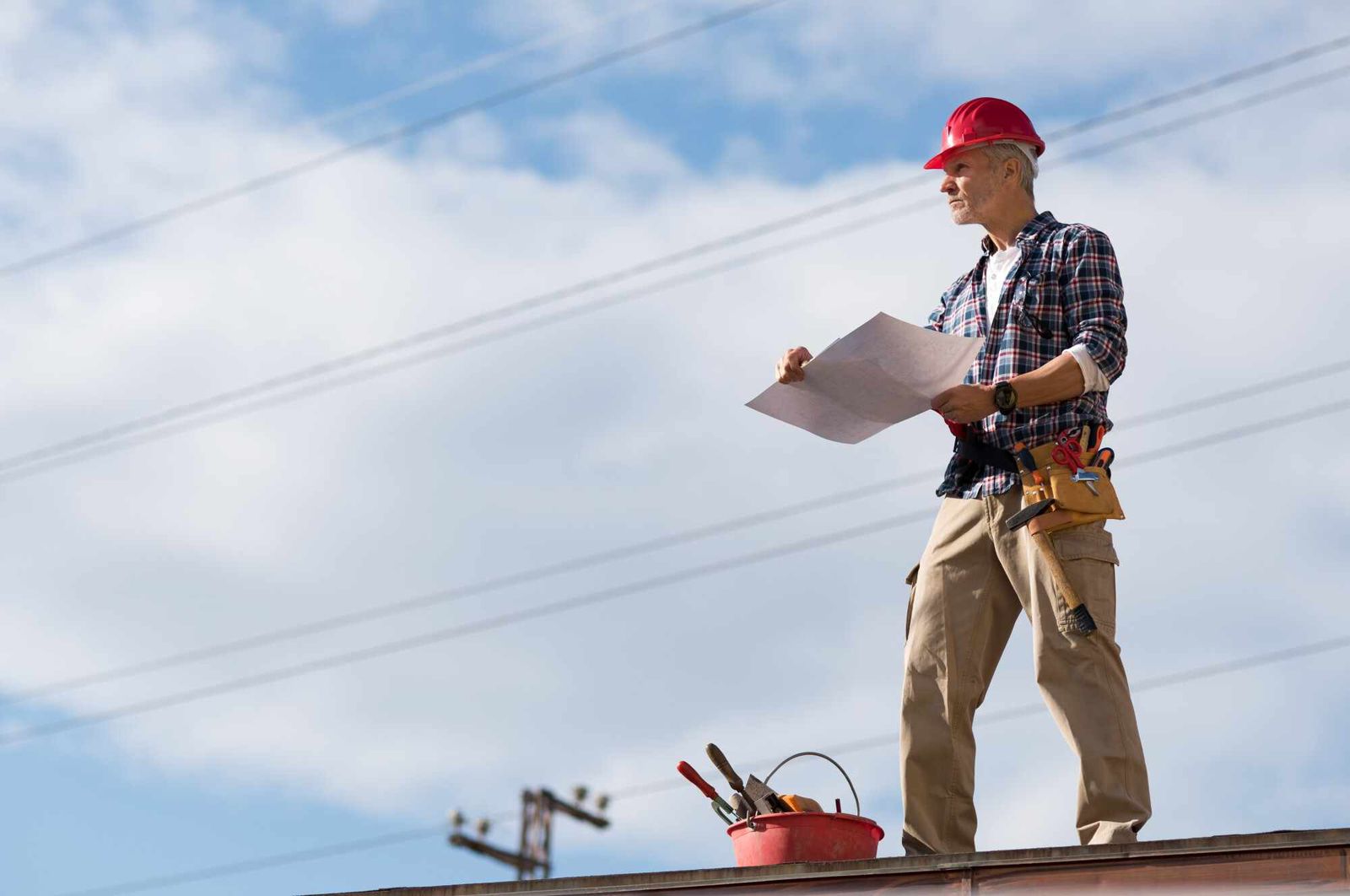As the seasons change, so do the conditions that affect our commercial roofs. Even small shifts in temperature, rain, or wind can greatly impact a roof’s performance and lifespan.
These seasonal changes test our roofs and may lead to repairs and maintenance. It’s important to understand how each season affects our roofs to keep them in good shape.
Let’s look at how seasonal changes can impact commercial roof repairs and the best ways to address these issues.
-
Winter Weather Challenges
During winter, snow and ice accumulation can pose severe risks to commercial roofs. Flat roofs are particularly vulnerable. They may retain snow that adds extra weight, leading to structural damage.
Moreover, the cycle of freezing and thawing can cause water to seep into the roofing materials, leading to leaks. Thus, regular inspections before and after winter storms are crucial for the following:
- identifying any issues
- and addressing potential problems early on
Ensuring your roof is cleared of snow and ice can help mitigate these risks and maintain the integrity of your commercial roof.
-
Spring: Peak Inspection Time
As winter fades, spring becomes the ideal time for roof inspections. The impacts of winter weather may surface during this season, including:
- leaks
- damaged flashing
- and compromised roofing materials
Addressing these issues promptly is essential to avoid larger problems during the hotter months. Spring is also a season of heavy rainfall, which can exacerbate existing issues if left unaddressed. Conducting inspections and industrial roof maintenance can ensure proper drainage systems are functioning, keeping water away from your roof and foundation.
Moreover, the mild weather makes it easy to schedule repairs and replacements. Facility managers should take advantage of this season to conduct necessary maintenance.
-
Summer Heat and UV Exposure
Summer brings increased temperatures and UV exposure, both of which can deteriorate roofing materials over time. The sun’s rays can damage the surface of a roof, leading to the following:
- cracks
- and weakened structural integrity
Asphalt roofing is particularly susceptible to UV damage. This may need commercial roof repairs sooner than expected if not properly maintained.
During this season, facility managers should consider applying reflective roof coatings that can reduce heat absorption and protect against UV damage. These coatings not only improve energy efficiency by keeping indoor temperatures cooler but also prolong the life of your roof.
Furthermore, summer is a great time for proactive maintenance. Roofing contractors often have more availability compared to the peak winter and spring months.
-
Fall Preparations and Storm Readiness
As the leaves begin to fall, it’s critical to prepare your roof for the challenges that winter will bring. Clogged gutters from debris can cause water backup, leading to leaks and other moisture-related problems. A thorough cleaning of the roof and gutters in the fall can significantly reduce risks as winter arrives.
Additionally, fall is often hurricane season in many areas, and commercial roofs need to be ready for high winds and heavy rain. Performing a comprehensive evaluation and making any necessary repairs can safeguard your building from storm damage.
You may visit a website like https://roofingmn.com for emergency roof services and help you to avoid costly issues down the line.
Discover How Seasonal Changes Impact Commercial Roof Repairs
Seasonal changes play a crucial role in the maintenance and repair of commercial roofs. From strong winds and heavy rain in the stormy season to extreme temperatures and UV rays in the summer, it’s essential to take extra care and precaution when managing roof maintenance. Contact a commercial roof repairs for an inspection and maintenance plan.
Like this article? Read more about these topics on our blog.

